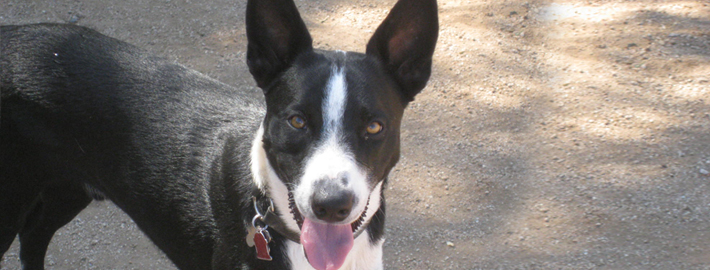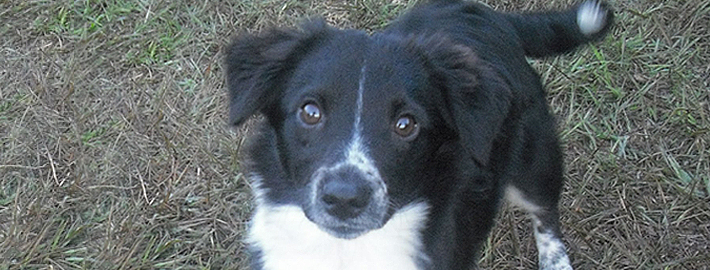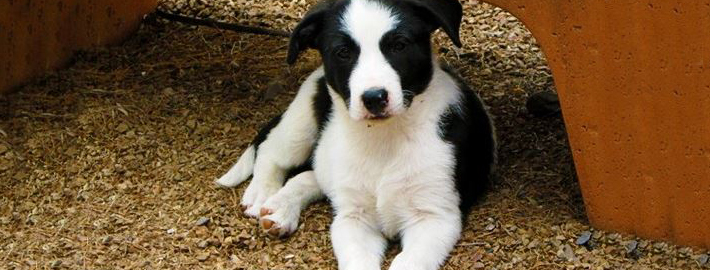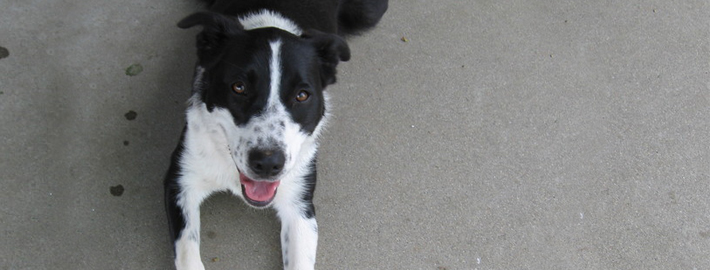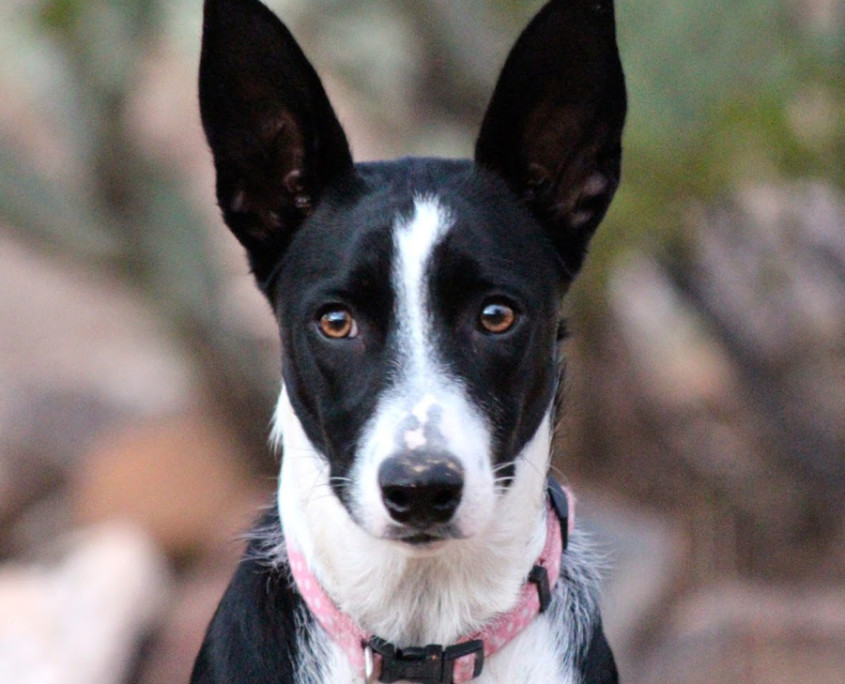What makes the McNab Shepherd Unique?
The McNab Shepherd which is also known as McNab Collie is similar in appearance to the Border Collie, particularly in its colouring. The McNab is typically black and white or red and white; both types generally have a white blaze going up the muzzle and onto the forehead. Its coat may be short or smooth in texture and length. Both are average shedders and require weekly brushing in order to remove dead fur.
Breed Groups
Page Contents
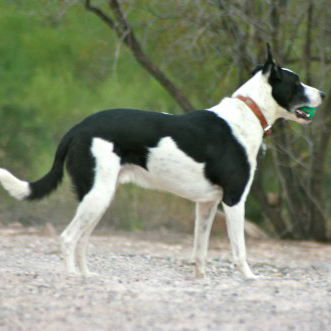
SnapShot
| Size: | Males – 38 to 63 cm (15 to 25 inches) Females – 38 to 63 cm (15 to 25 inches) |
| Weight: | Males – 16 to 32 kg (35 to 70 pounds) Females – 16 to 32 kg (35 to 70 pounds) |
| Origin: | Mendocino County, California, United States |
| Life Span: | 11 – 13 Years |
| Colour: | Red & White, Tri-color, Black & White |
| Litter Size: | up to 7 puppies |
Is the McNab Shepherd Right For You?
The McNab is not only hardworking and dependable, it’s also very protective. With attuned senses and a keen intelligence, it has a watchful but restrained way when meeting strangers. Overall, the McNab is a handy helper with a heart of gold.
McNab, as a renowned cattle herder, the dog can also herd horses, sheep and llamas. Apart from excellent herding and driving skills, this dog is also an excellent hunter of deer and wild boar. As a family pet, this dog, unlike other herding breeds, has an even tempered and warm personality. It is a human oriented breed that forms strong bond with its family. Known to be a one man or one family dog, it is very devoted to its family. With attuned senses and keen intelligence, it has a watchful but restrained way when meeting with strangers. It is a fairly territorial breed that will seldom tolerate strange dogs and people on “its” territory. It is friendly with dogs and pets in its family and specially kind and gentle with children. This active breed will need lots of exercise; both physical and mental.
In 5 Words
- Friendly
- Sociable
- Obedient
- Protective
- Hard-working
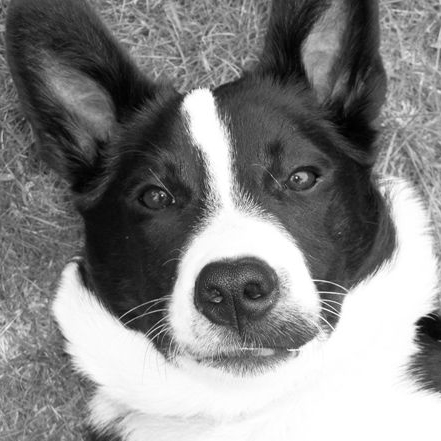
Characteristics
Learn About the McNab Shepherd
Description
General Description
The McNab is a medium size, hunting and herding dog that originated in California, USA. This dog is also known as McNab Sheepdog, McNab Shepherd, McNab Border Collie and McNab Herding dog. It was developed by an Scottish shepherd, Alexander McNab, who settled in California.
The McNab is an athletic, small or medium-sized dog with a short, black coat that usually has white markings on the muzzle, chest, feet and tip of the tail. Its distinctive, triangular ears are either pricked or flop over. Its tail can be naturally bobbed or long. The McNab is also distinguished by its cat-like feet.
Size
Height: 38 to 64 cm (15 to 25 in) at the shoulder. Some males may mature taller.
Weight: 16–34 kg (35–75 lb). Some males may mature heavier.
Coat
Some have natural bobtails and others have long, narrow, short-furred tails. Its ears are medium sized and can be “pricked” or the top half may flop over. The coat is smooth or short.
Short History of the McNab
Alexander McNab was originally a sheep herder in the Grampian Mountains in Scotland, and emigrated to Mendocino County, CA in 1866. He settled on a 10,000 acre ranch, which he named the McNab Ranch. McNab, dissatisfied with the working ranch dogs available locally, traveled back to Scotland in 1885, to find the type of dogs he had worked with while raising sheep. He eventually bought two Scottish Collies, Peter and Fred. He returned to California with Peter, while he left Fred in Scotland to finish his training. He imported him back to his ranch later.[2]
Being males, McNab had Peter and Fred bred with two females supposedly of Spanish origin, brought by Basque sheep herders from the Basque region of Northern Spain. Other sources claim that they were, in fact, bred with other Scottish Border Collies.[3] McNab later imported several more collies from Scotland, some of which were red and white Fox Collies. Some McNab dogs share this coloration, as previously mentioned. The McNabs were bred as the perfect cattle dog, that could both head and heel. They are still used in California ranches and stockyards today.
McNabs are not recognized by the National Kennel Association, although they are slowly becoming more and more common and popular.
Temperament
Developed for its working skills rather than looks, the McNab dog is a versatile herder, hunter and farm dog. A renowned cattle herder, the dog can also herd horses, sheep and llamas. Apart from excellent herding and driving skills, this dog is also an excellent hunter of deer and wild boar.
When it is on the job, the McNab is focused on the task at hand and will not rest until its work is completed. Away from work, this breed is loyal and affectionate towards it owner. It does well with children if it is raised with them, though it may attempt to gently herd people and other animals within the home.
This breed is prone to barking, particularly while working, so it is best-suited for an open environment. If herding work is not available, the McNab will enjoy agility exercises or playing catch, as it needs to be challenged both physically and mentally.
Caring for Your McNab Shepherd
General Health
McNabs are generally robust health-wise although they can suffer from the following:
- Hip dysplasia
- Von Willebrand’s Disease
- Epilepsy
- Primary lens luxation
- Cherry eye
- Entropian & ectropian
However, not all McNabs would suffer from any of these conditions, but as dogs grow older it’s always worth taking them for regular check-ups at the vets to make sure nothing untoward is going on.
Grooming & Bathing
It is a low maintenance breed that requires once a week brushing of its short haired coat. Bathing should be done only when necessary. This dog will need lots of physical and mental stimulation and the owner must make sure that this breed gets enough time to play and run in an open area.
Exercise & Training
However, if you own this dog, you need to keep in mind that being a working dog breed it would have high exercise requirements. If no space is available where the dog can run and play freely, you need to take the dog on long daily walks. This will ensure that the dog will not develop destructive habits.

